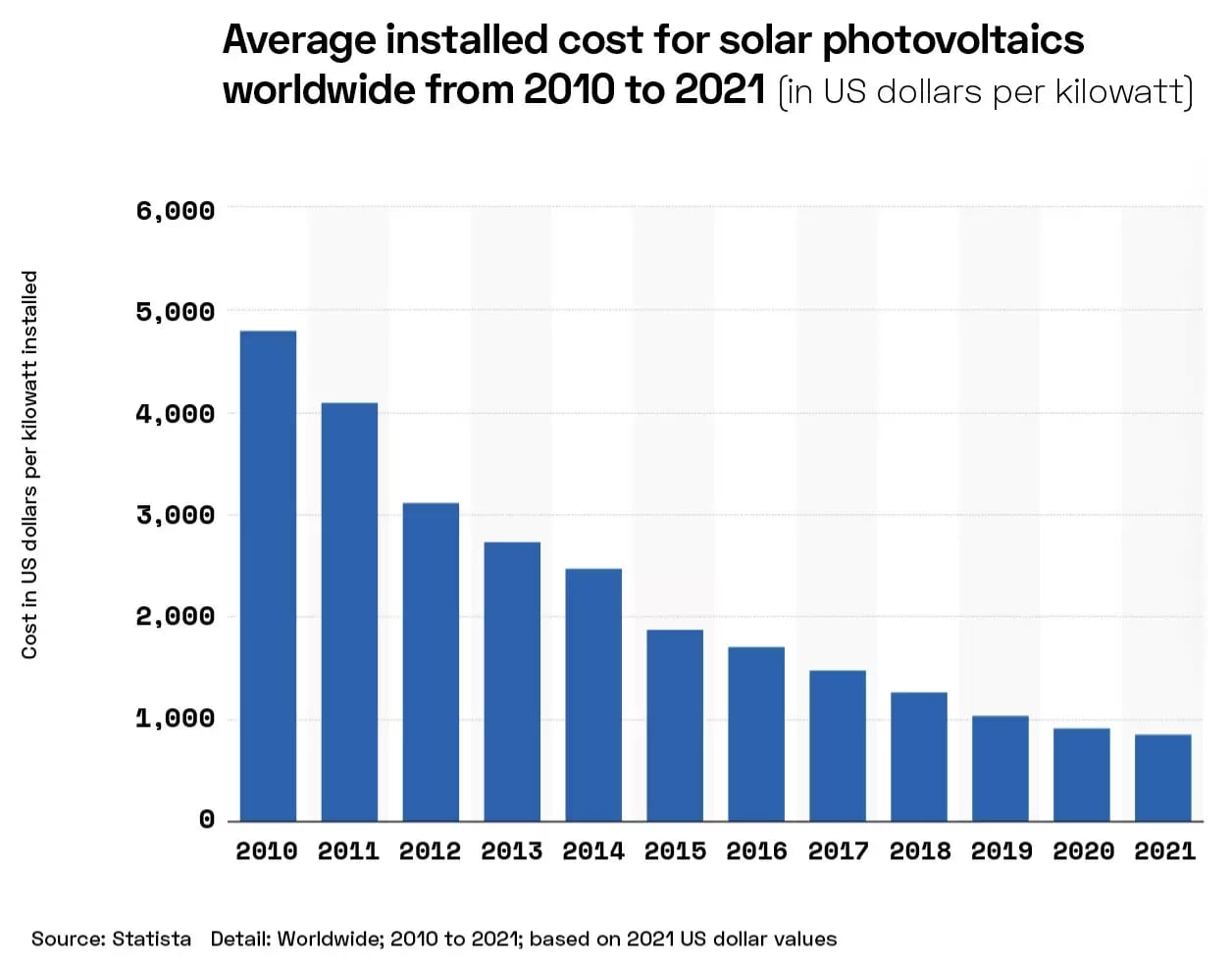On the most recent episode of Opto Sessions, Stephen Derkash, senior advisor at EQM Indexes and HANetf’s partner on the Solar Energy UCITS ETF, shares his view on solar stocks and explains why solar developers may be solid investments.
Solar stocks are finally coming of age, says Stephen Derkash on the latest episode of Opto Sessions. The senior advisor at EQM Indexes helped launch Europe’s first pure-play solar ETF in 2021, and believes the solar investment theme is about to bear fruit.
The growth appears to be at an inflection point. “It's just at the beginning of the S curve,” says Derkash.
Ten years ago, there wasn’t much activity in the solar sector, he says. It was a nice product and advocates liked it a lot, but it wasn't nearly as cost-effective as it is now. Since then, costs have come down approximately 90% and solar has grown proportionately much further, and continues to do so, says Derkash. According to the International Energy Agency, solar power makes up 4.5% of electricity generation around the world today.
“But that's supposed to [almost] double to 8% over the next two to three years, and double again to about 16% by the end of the decade. By the year 2050, projections are for solar to make up 35–40% of overall global electricity production.” Unsurprisingly, price has been a major driver. “Solar is now the cheapest option for electricity, and it’s only supposed to get cheaper as the technology improves further.”
He says this gives solar the edge over wind power, which is “less of a technology, and more of an industrial mechanised product. There are some issues with that — cost probably won't come down quite as much.”
“Solar is now the cheapest option for electricity, and it’s only supposed to get cheaper as the technology improves further”

Markets to watch
Geographically, the companies leading the solar charge extend across the globe. “The supply chain in China is very well-developed,” he says. “You have a lot of players in the Asian space — not only in China, but also in Korea and Taiwan. Then you have companies in Europe, like SMA Solar [S92.DE] in Germany or [Switzerland-based] Meyer Burger [MBTN.SW]. “Then, of course, we have the developers. One developer, Scatec [SCATC.OL] in Norway, has been very involved in developing solar in emerging markets like Latin America.” He points out there a lot of different ways to play the solar theme — one of the reasons why EQM launched a passive ETF. “We wanted to get access to all the themes, because it is a cyclical industry. When certain parts are working, other parts may not be as well. “For example, last year, the price of the raw material polysilicon went up about four times, and companies that were exposed to that did very well. This year, raw material has completely come back down to earth, and it's down 60–80%. So the companies whose margins had been hit from using the raw material are now benefitting.”
Bright future for solar energy
“Solar in general is considered now a more mature technology,” says Derkash. As capacity increases and prices fall, he believes competitive scale will become more critical. “The companies that can have scale, or that can make some innovation or improvements, will benefit.
“When you think about solar, a lot of people think of rooftop — that's called distributed energy, or ‘behind the meter’, and that will play an important role. But the really at-scale solutions are these solar farms being developed around the world. Lower cost, mass technology — that's where you're getting the gigawatts coming on.” From Derkash’s vantage point, solar looks well-placed to become the world’s primary source of energy. “A lot of the service players — companies that are making solar trackers, or other plays in the periphery — can be great investments. And the developers will be beneficiaries of all these cost declines,” he says.
The US government’s landmark Inflation Reduction Act is positioned to drive further investment in renewable energies and push the tipping point for solar to go mainstream.
“You're going to see really interesting dynamics take place now that the US is investing so much through investment tax credits and really trying to challenge China's supremacy in this area.
“The new battlegrounds being fought are in these new technologies. If you look at electric vehicles and solar battery technology, the country or companies that can emerge victorious will have a huge advantage going forward based on scale.”
Disclaimer Past performance is not a reliable indicator of future results.
CMC Markets is an execution-only service provider. The material (whether or not it states any opinions) is for general information purposes only, and does not take into account your personal circumstances or objectives. Nothing in this material is (or should be considered to be) financial, investment or other advice on which reliance should be placed. No opinion given in the material constitutes a recommendation by CMC Markets or the author that any particular investment, security, transaction or investment strategy is suitable for any specific person.
The material has not been prepared in accordance with legal requirements designed to promote the independence of investment research. Although we are not specifically prevented from dealing before providing this material, we do not seek to take advantage of the material prior to its dissemination.
CMC Markets does not endorse or offer opinion on the trading strategies used by the author. Their trading strategies do not guarantee any return and CMC Markets shall not be held responsible for any loss that you may incur, either directly or indirectly, arising from any investment based on any information contained herein.
*Tax treatment depends on individual circumstances and can change or may differ in a jurisdiction other than the UK.
Continue reading for FREE
- Includes free newsletter updates, unsubscribe anytime. Privacy policy



